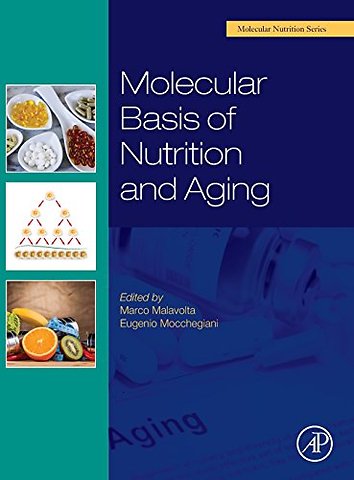Molecular Basis of Nutrition and Aging
A Volume in the Molecular Nutrition Series
Samenvatting
Molecular Basis of Nutrition and Aging: A Volume in the Molecular Nutrition Series focuses on the nutritional issues associated with aging and the important metabolic consequences of diet, nutrition, and health. The book is subdivided into four parts that reflect the impact of nutrition from a biomolecular level to individual health.
In Part One, chapters explore the general aspects of aging, aging phenotypes, and relevant aspects of nutrition related to the elderly and healthy aging. Part Two includes molecular and cellular targets of nutrition in aging, with chapters exploring lipid peroxidation, inflammaging, anabolic and catabolic signaling, epigenetics, DNA damage and repair, redox homeostasis, and insulin sensitivity, among others.
Part Three looks at system-level and organ targets of nutrition in aging, including a variety of tissues, systems, and diseases, such as immune function, the cardiovascular system, the brain and dementia, muscle, bone, lung, and many others. Finally, Part Four focuses on the health effects of specific dietary compounds and dietary interventions in aging, including vitamin D, retinol, curcumin, folate, iron, potassium, calcium, magnesium, zinc, copper, selenium, iodine, vitamin B, fish oil, vitamin E, resveratrol, polyphenols, vegetables, and fruit, as well as the current nutritional recommendations.
Specificaties
Inhoudsopgave
Net verschenen
Rubrieken
- aanbestedingsrecht
- aansprakelijkheids- en verzekeringsrecht
- accountancy
- algemeen juridisch
- arbeidsrecht
- bank- en effectenrecht
- bestuursrecht
- bouwrecht
- burgerlijk recht en procesrecht
- europees-internationaal recht
- fiscaal recht
- gezondheidsrecht
- insolventierecht
- intellectuele eigendom en ict-recht
- management
- mens en maatschappij
- milieu- en omgevingsrecht
- notarieel recht
- ondernemingsrecht
- pensioenrecht
- personen- en familierecht
- sociale zekerheidsrecht
- staatsrecht
- strafrecht en criminologie
- vastgoed- en huurrecht
- vreemdelingenrecht

